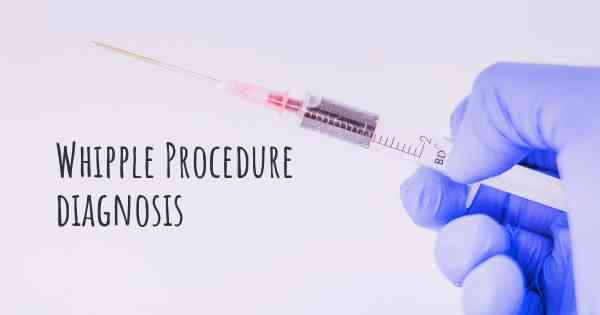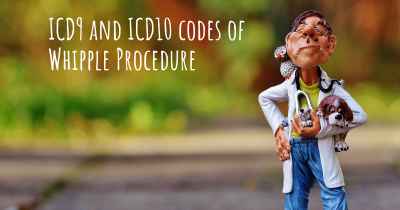How is Whipple Procedure diagnosed?
See how Whipple Procedure is diagnosed. Which specialists are essential to meet, what tests are needed and other useful information for the diagnosis of Whipple Procedure

The Whipple procedure, also known as pancreaticoduodenectomy, is a complex surgical procedure performed to treat certain conditions affecting the pancreas, bile ducts, and small intestine. It involves the removal of the head of the pancreas, the duodenum (the first part of the small intestine), the gallbladder, and sometimes a portion of the stomach.
Diagnosing the need for a Whipple procedure typically involves a combination of medical history evaluation, physical examination, imaging tests, and laboratory tests. Let's explore each of these diagnostic methods in more detail:
Medical History Evaluation:
The first step in diagnosing the need for a Whipple procedure is a thorough evaluation of the patient's medical history. The surgeon will ask about the patient's symptoms, such as abdominal pain, jaundice (yellowing of the skin and eyes), unexplained weight loss, changes in bowel movements, and appetite loss. They will also inquire about any previous medical conditions or surgeries that may be relevant.
Physical Examination:
During a physical examination, the surgeon will carefully examine the patient's abdomen for any signs of tenderness, masses, or abnormal growths. They may also check for jaundice by looking at the color of the patient's skin and eyes. Additionally, the surgeon will assess the patient's overall health and fitness for surgery.
Imaging Tests:
Imaging tests play a crucial role in diagnosing conditions that may require a Whipple procedure. These tests help visualize the internal structures of the abdomen and provide detailed information about the pancreas, bile ducts, and surrounding tissues. The most commonly used imaging tests include:
- Computed Tomography (CT) Scan: A CT scan uses X-rays and computer technology to create detailed cross-sectional images of the abdomen. It can help identify tumors, cysts, or other abnormalities in the pancreas or surrounding organs.
- Magnetic Resonance Imaging (MRI): An MRI uses powerful magnets and radio waves to generate detailed images of the abdomen. It provides excellent visualization of soft tissues and can help determine the extent of the disease.
- Endoscopic Retrograde Cholangiopancreatography (ERCP): ERCP combines endoscopy and X-ray imaging to examine the bile ducts and pancreatic ducts. It can help identify blockages, strictures, or tumors in these ducts.
- Endoscopic Ultrasound (EUS): EUS involves inserting an ultrasound probe into the digestive tract to obtain detailed images of the pancreas and surrounding structures. It can help evaluate tumors, lymph nodes, and blood vessels.
Laboratory Tests:
Laboratory tests are essential for diagnosing conditions that may require a Whipple procedure. These tests involve analyzing blood samples to assess various parameters and detect any abnormalities. The most common laboratory tests include:
- Blood Tests: Blood tests can help evaluate liver function, pancreatic enzymes, and tumor markers. Elevated levels of certain enzymes or tumor markers may indicate the presence of pancreatic or biliary diseases.
- Biopsy: In some cases, a biopsy may be necessary to confirm the diagnosis. During a biopsy, a small sample of tissue is taken from the pancreas or other affected areas and examined under a microscope to check for cancer or other abnormalities.
It is important to note that the diagnosis of a condition requiring a Whipple procedure is typically made by a multidisciplinary team of healthcare professionals, including surgeons, gastroenterologists, radiologists, and pathologists. They collaborate to review all the available information, including medical history, physical examination findings, imaging tests, and laboratory results, to determine the most appropriate treatment plan.
If a Whipple procedure is deemed necessary, the patient will undergo further preoperative evaluations, such as cardiac assessments and nutritional assessments, to ensure they are fit for surgery. The final decision to proceed with the Whipple procedure is made after careful consideration of the patient's overall health and the potential benefits and risks of the surgery.








